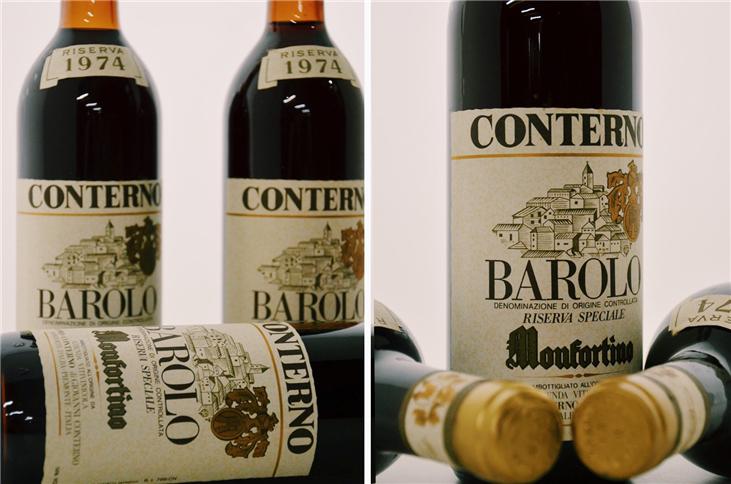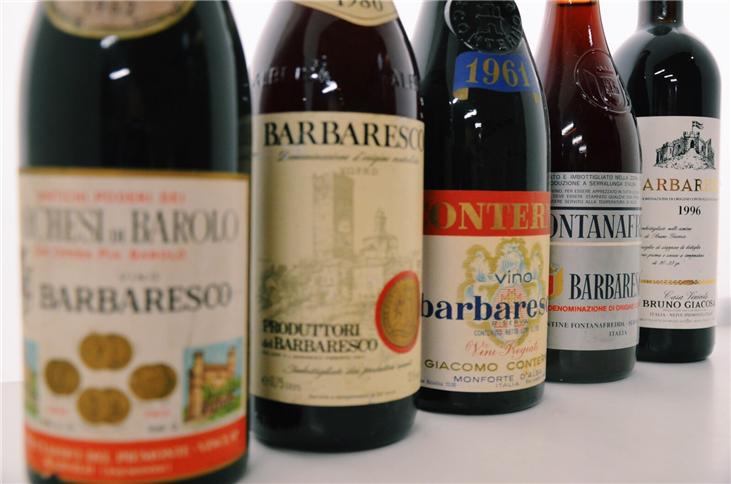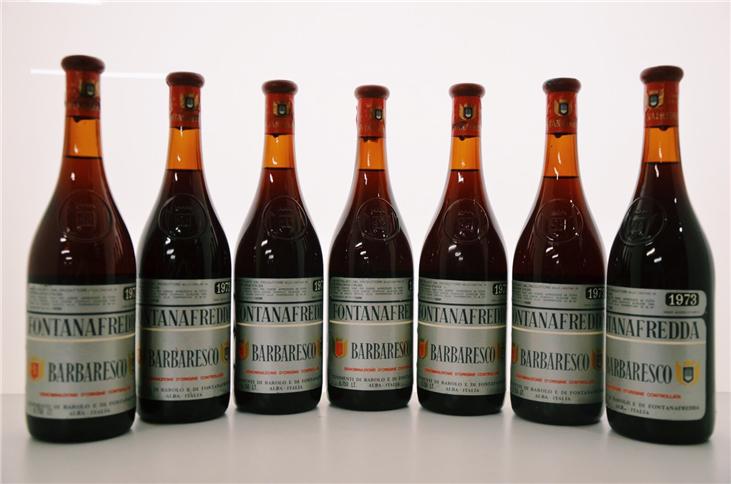In a previous blog post, we already took a closer look at Barolo, the ‘king of wines’. But there is also a ‘queen of wines’: Barbaresco. Both appellations are made from the prestigious grape Nebbiolo and located near Alba, the capital of hilly area Langhe. In 2014, this magnificent area was added by Unesco to the list of the World's Heritage of Humanity.
Barolo and Barbaresco are intense and complex wines with high tannin and acidity level. They are light in colour and both suitable for cellar ageing. Although they have many similarities, there are significant differences between these two Italian appellations.
The historical grape Nebbiolo
Both appellations Barbaresco and Barolo are made from the Nebbiolo grape. It’s Piedmont’s most famous red grape variety next to Barbera and Dolcetto. The grape’s history dates back to the 12th century. Over the centuries, the grape adapted to the soil of Piedmont, and today it is responsible for two of Italy’s most incredible wines.
The Nebbiolo grape is small and has thin skin but don’t let its size mislead you: Nebbiolo wines are powerful. They have expressive aromas, a high level of tannins and a balancing acidity.
The Nebbiolo grape is the first one to bud break in the spring, but the last one to be harvested in the fall. This is one of the reasons why you’ll find the Nebbiolo grape mainly in the southern part of the vineyards, where there is more sun and conditions are drier.
The differences between Barbaresco and Barolo
Although both appellations use Nebbiolo grapes, they produce two subtly different wines because of their topography, soil and ageing requirements.
Topographic differences
Barolo is situated in the South-West of Langhe; a hilly are in the province of Cuneo in Piedmont. The region lies at higher elevations, rising nearly 50 metres above Barbaresco, which is located North-East.
Barbaresco lies closer to the river Tanaro and the nearby the Ligurian Sea. Because of the maritime influence and the lower altitude vineyards, the Nebbiolo grapes ripen quicker than in Barolo. This also means fermentation happens earlier and the winemaking process is shorter in comparison to Barolo.
The soil of Barbaresco and Barolo
The soil in Barbaresco is more fertile whereby the vines in Barbaresco produce fewer tannins than the ones in Barolo. Both wines are light in colour and smell delicate. They are complex and have a long finish, but in the mid-palate, you can taste the difference: a Barolo wine will taste fuller while a Barbaresco wine is much brighter.
The soils of Barolo and Barbaresco are both rich in lime and clay. Because the lime has a high level of pH (alkaline), the vines produce grapes with a lower level of pH and a higher level of acidity. An important factor in creating high-quality wines.
Different ageing requirements
Barbaresco has a minimum ageing requirement of 24 months, while Barolo requires 38 months (including 18 months in oak or wood). They both need at least 24 months cellaring to tame the tannins. To receive the Riserva label, Barbaresco requires an ageing period of 48 months and Barolo of 62 months (including 18 months in oak or wood).
Barolo wines are perfect for decades of cellaring thanks to the high acidity and tannin level caused by the Nebbiolo grape. This also means Barolo wines are more expensive than Barbaresco wines.
The history of Barbaresco
Until 1894 Barbaresco was somewhat unknown because all the grapes were used in Barolo wines. The winemakers decided to take on the same style as Barolo and promoted Barbaresco as an alternative to Barolo. Because of their younger soils, they could produce lighter, younger and more delicate wines that still are easier to drink than Barolo wines.
After World War II and the Phylloxera epidemic, it was the Gaia family who put Barbaresco on the map. In 1958 they founded the Produttori del Barbaresco, a small group of producers ànd a label of high quality.
Most wine producers blend grapes from different vineyards spread in the wine region. But there are also houses that produce single vineyard wines, like Rabajà, Montestefano, Pora, Asili and Martinenga.
The history of Barolo
The appellation Barolo was named after Marchesa of Barolo, a noblewoman living in the 19th century. When the appellation Barolo got its name in 1850, it was quite a different wine. Barolo wines were sweet ànd sparkling.
The wine region Barolo counts five significant communes: La Morra, Barolo, Castiglione Falletto, Serralunga d’Alba and Monforte d’Alba and can be divided into two major parts:
- La Morra and Barolo are known for their calcareous marl soils. The wines produced here are aromatic and have an elegant style.
- The soils of Castiglione Falletto, Serralunga d’Alba and Monforte d’Alba are much older and consist of sandstone. They produce slow-maturing wines that are spicy and structured.
Until the 1960’s, winemakers in Barolo blended grapes from different vineyards. But, inspired by the classification system of Burgundy, individual winemakers started with estate bottling and produced wines with grapes from one single vineyard. This led to a discussion about developing a Cru classification for Barolo, but - up to now - there’s still no official classification for Barolo wines.
In the 1970’s and 1980’s a group of Barolo winemakers introduced new techniques to produce fruitier and easier wines. This divided the producers into two camps, and this conflict is known as the ‘Barola Wars’. But today both traditional and modern winemakers use modern techniques and styles are mixed.
Comparing Barolo and Barbaresco wines
Barolo wines are often described as muscular and concentrated with firm tannins. The high level of tannins is the result of a more extended fermentation and winemaking process. Because the skin of the grapes is longer in contact with the juice, more tannins are being extracted. Barbaresco, on the other hand, is an elegant wine that has a particular lightness.
Both wines were granted the DOCG status in 1980 but with different regulations. To receive the Riserva label, Barbaresco requires an ageing period of 48 months and Barolo of 62 months (including 18 months in oak or wood). This means, a Barbaresco Riserva produced in the same year as a Barolo Riserva, is sooner available on the market.
Taste the difference
Curious if you might taste the difference? Discover our wide range Barolo and Barbaresco wines in our online shop and organise a blind wine tasting with your friends. We promise it will be an evening full of discoveries. Don’t hesitate to contact us for personal assistance.







